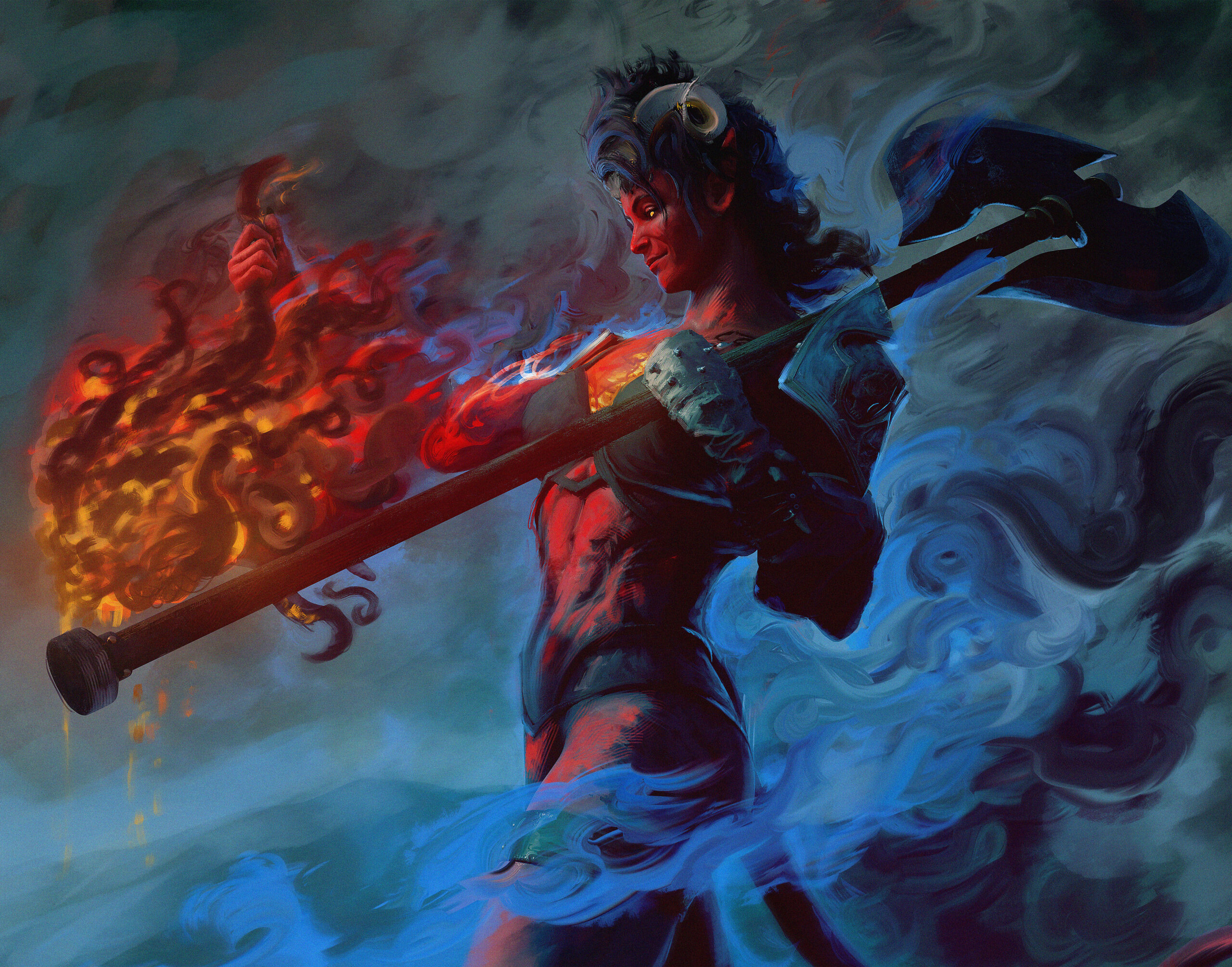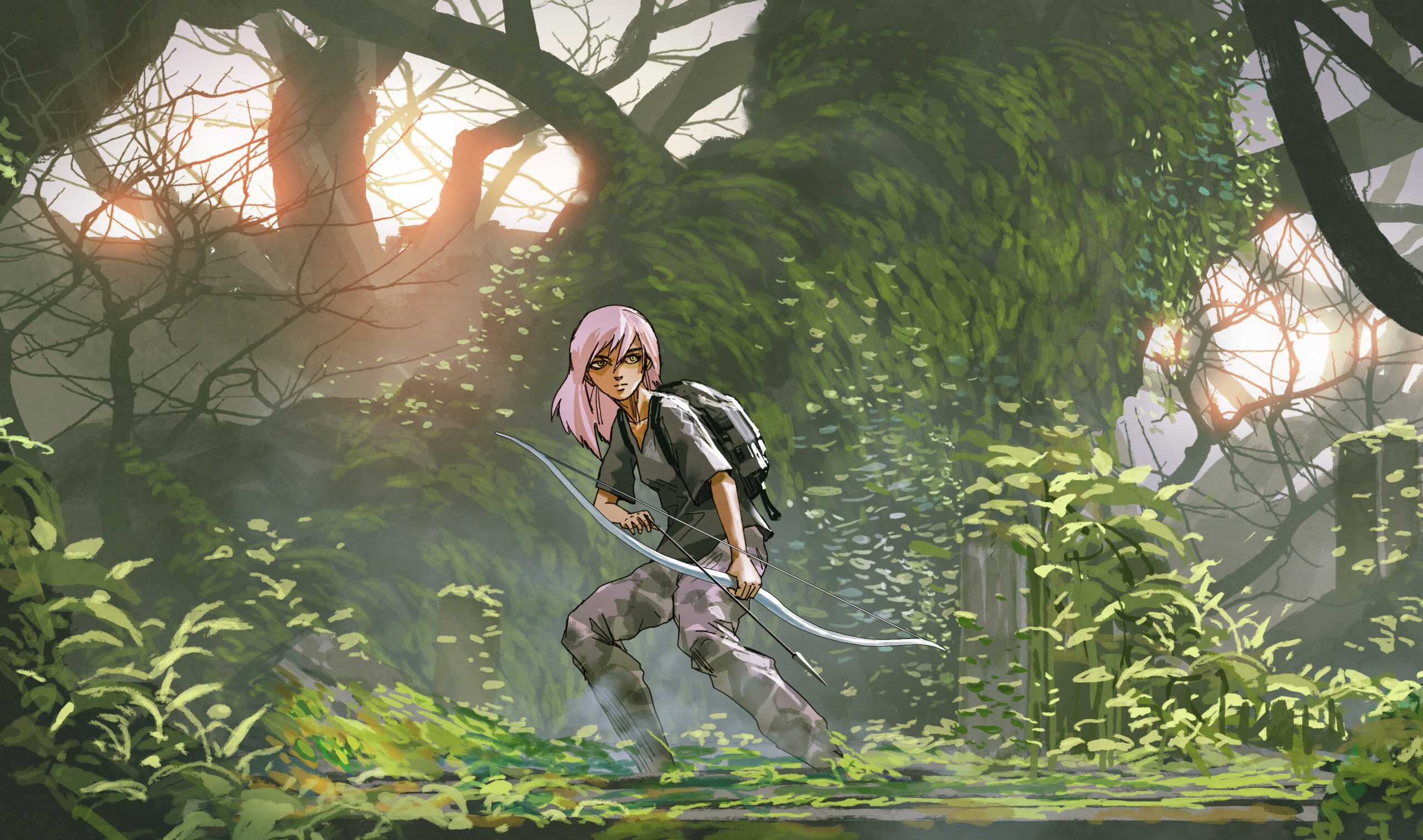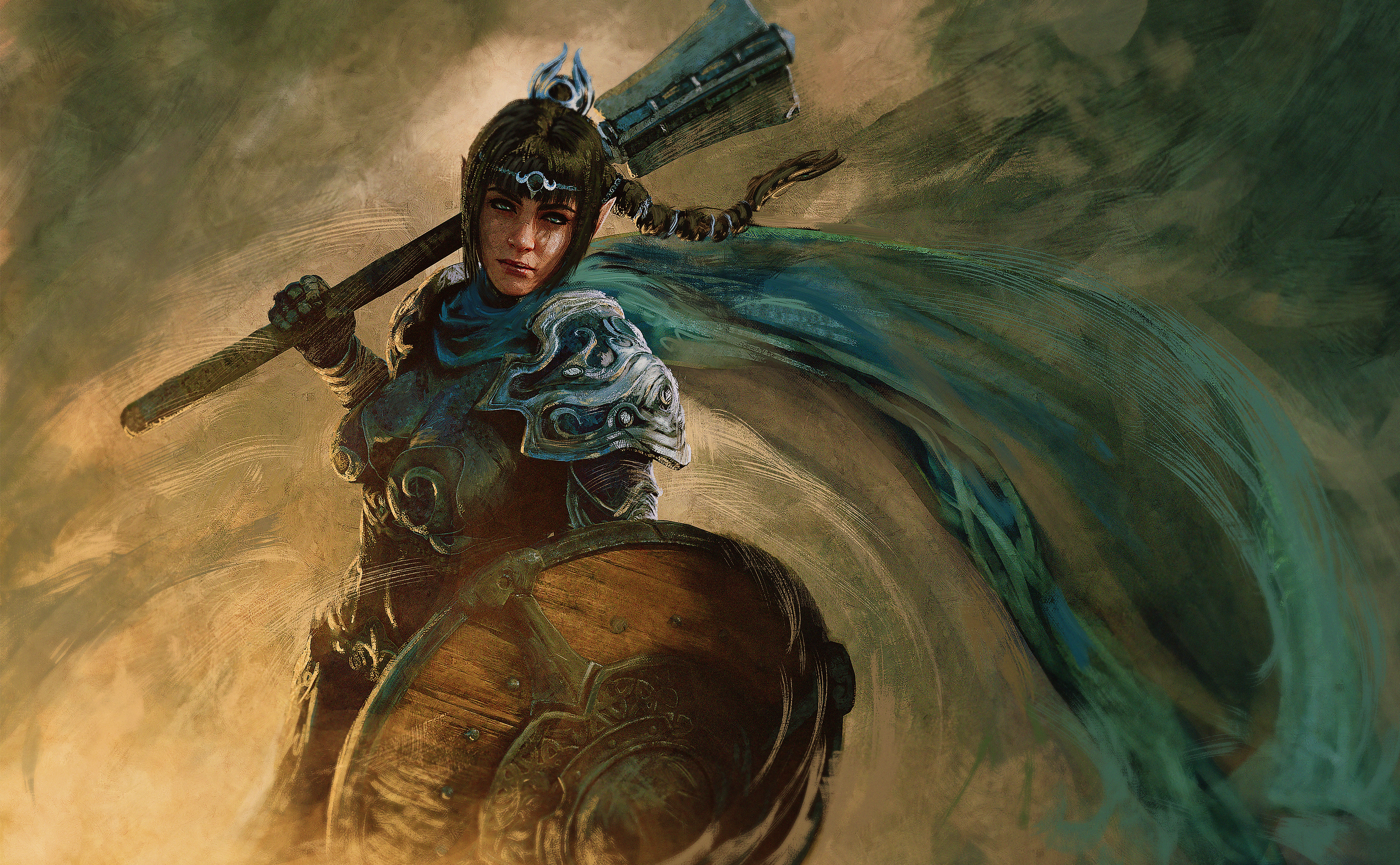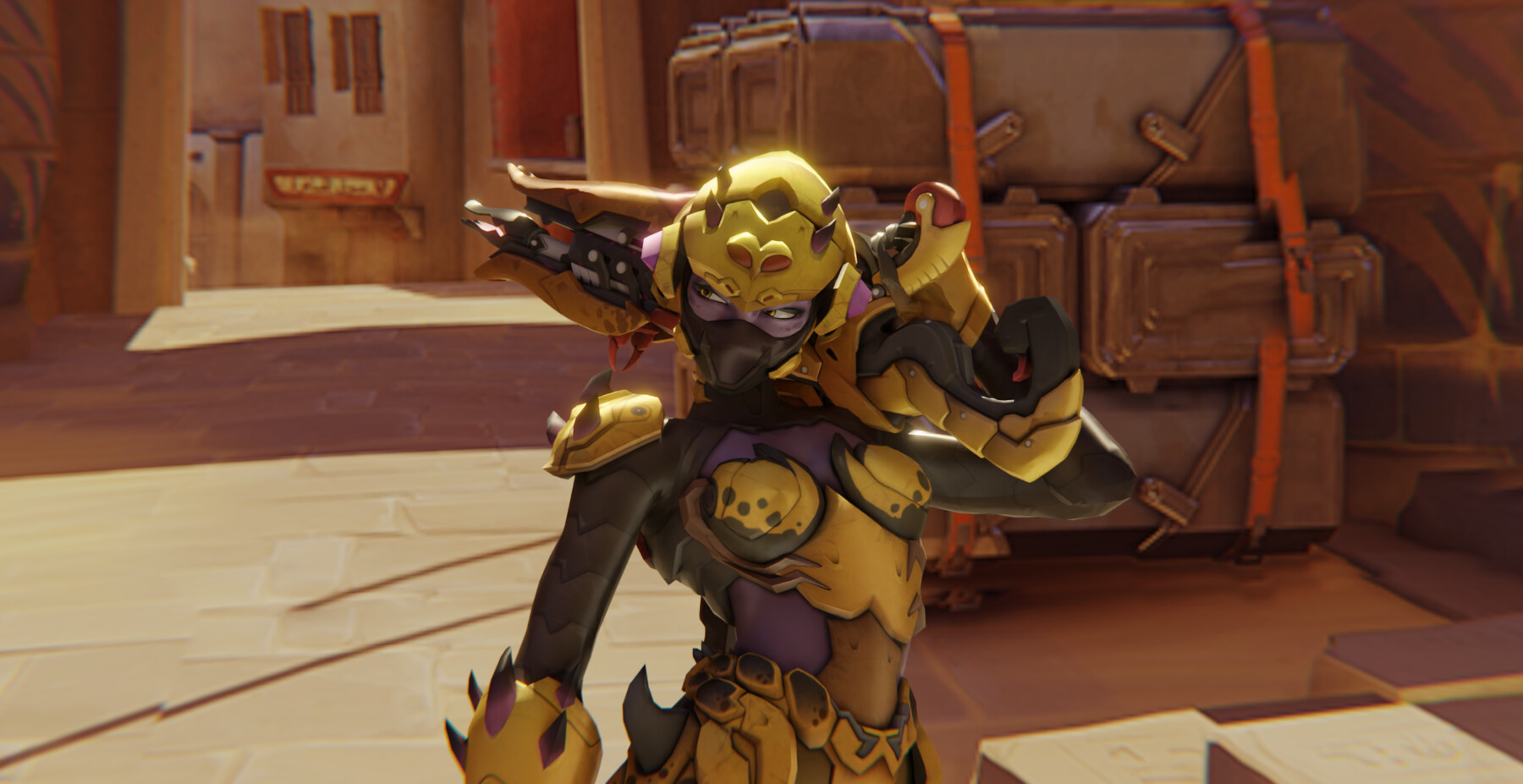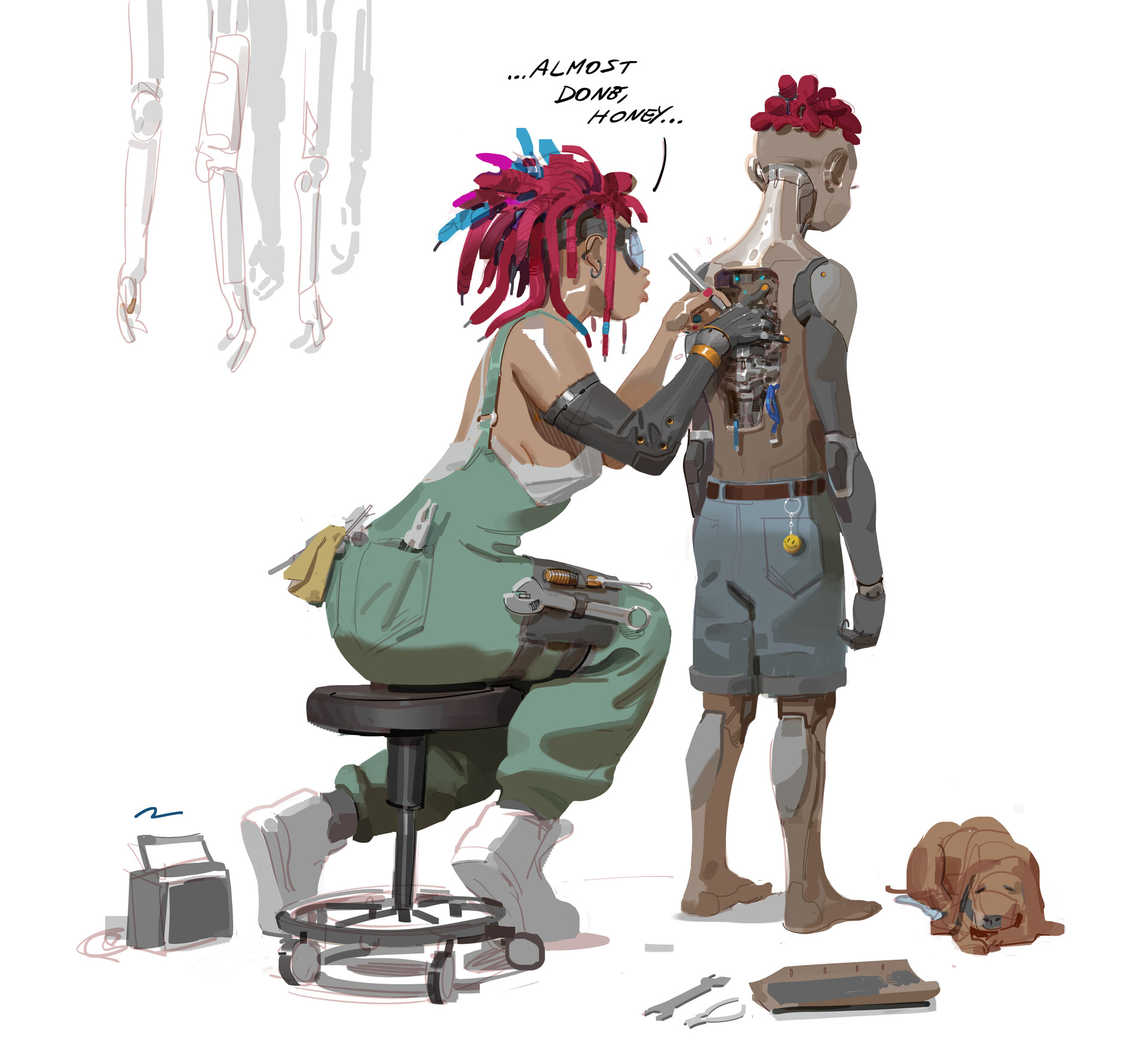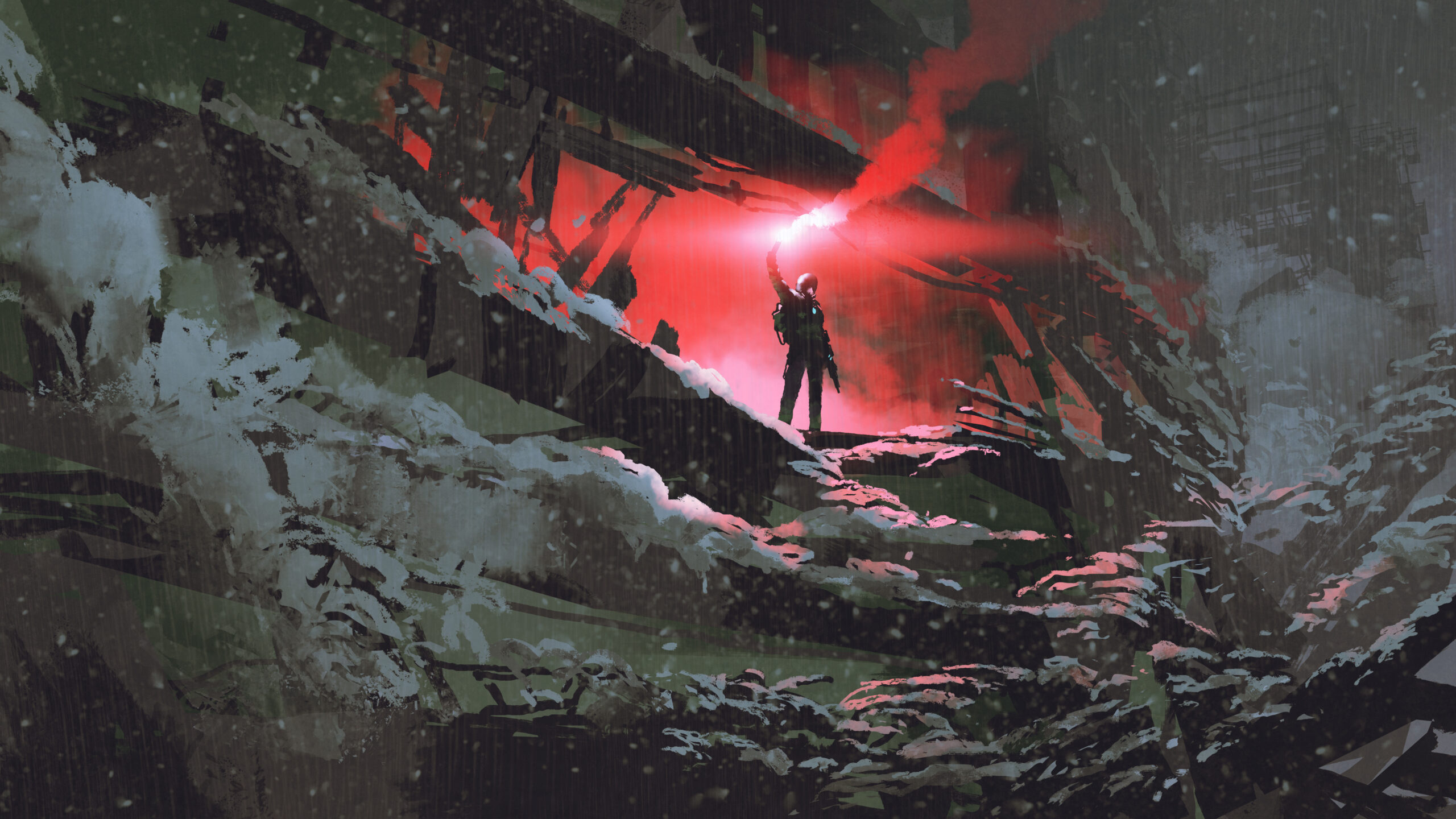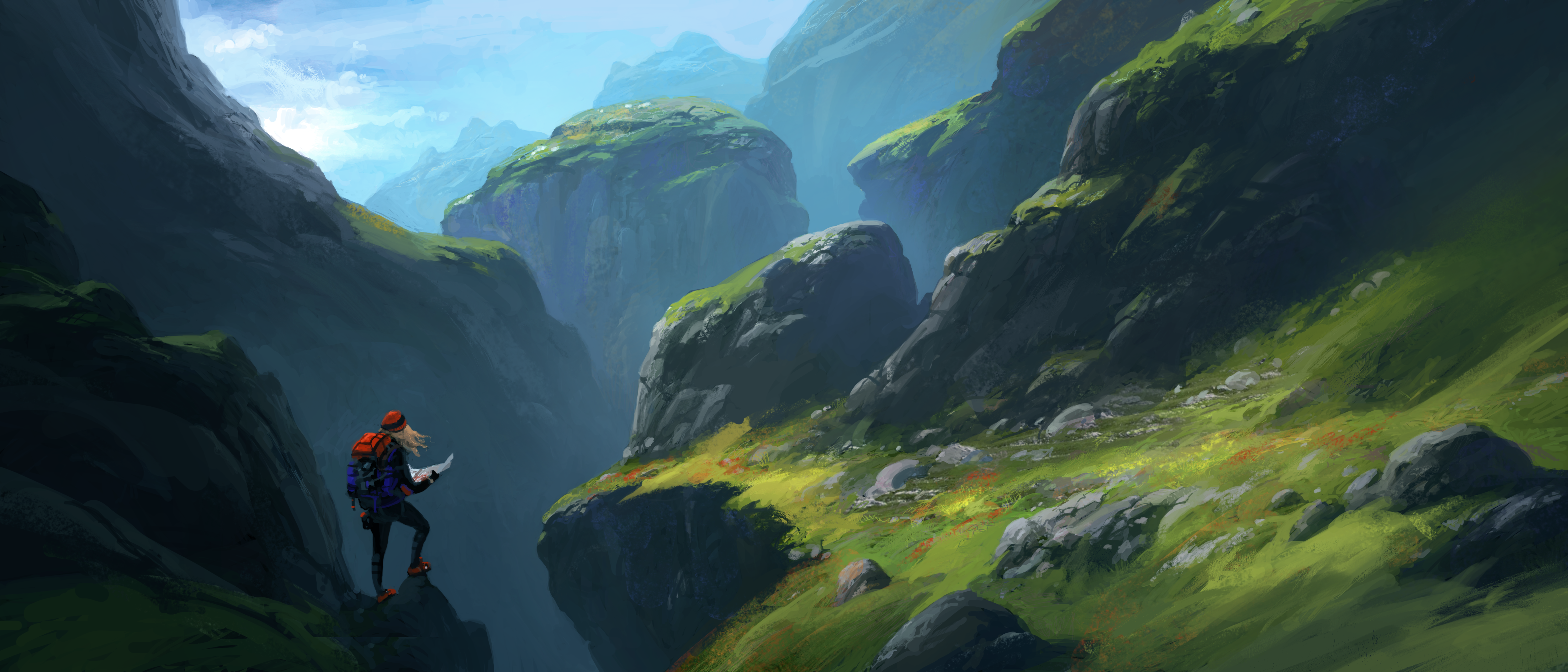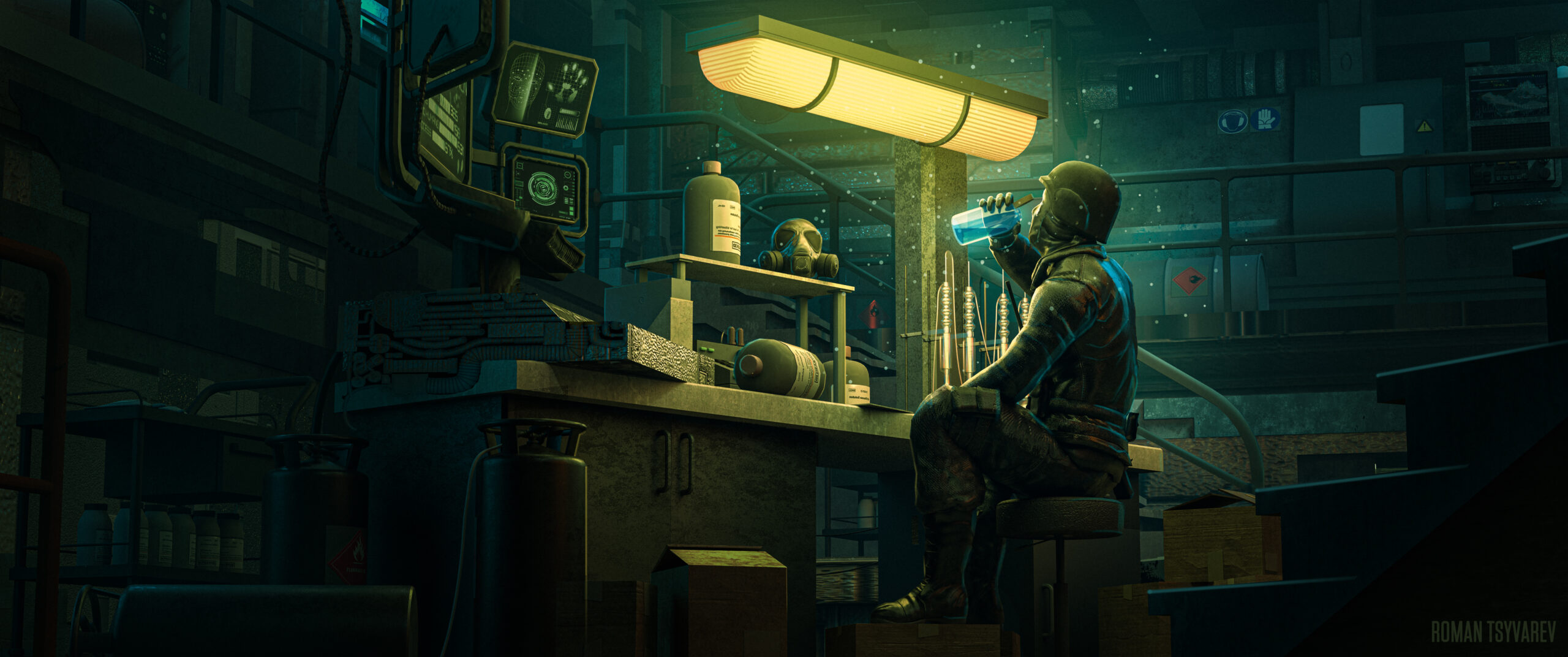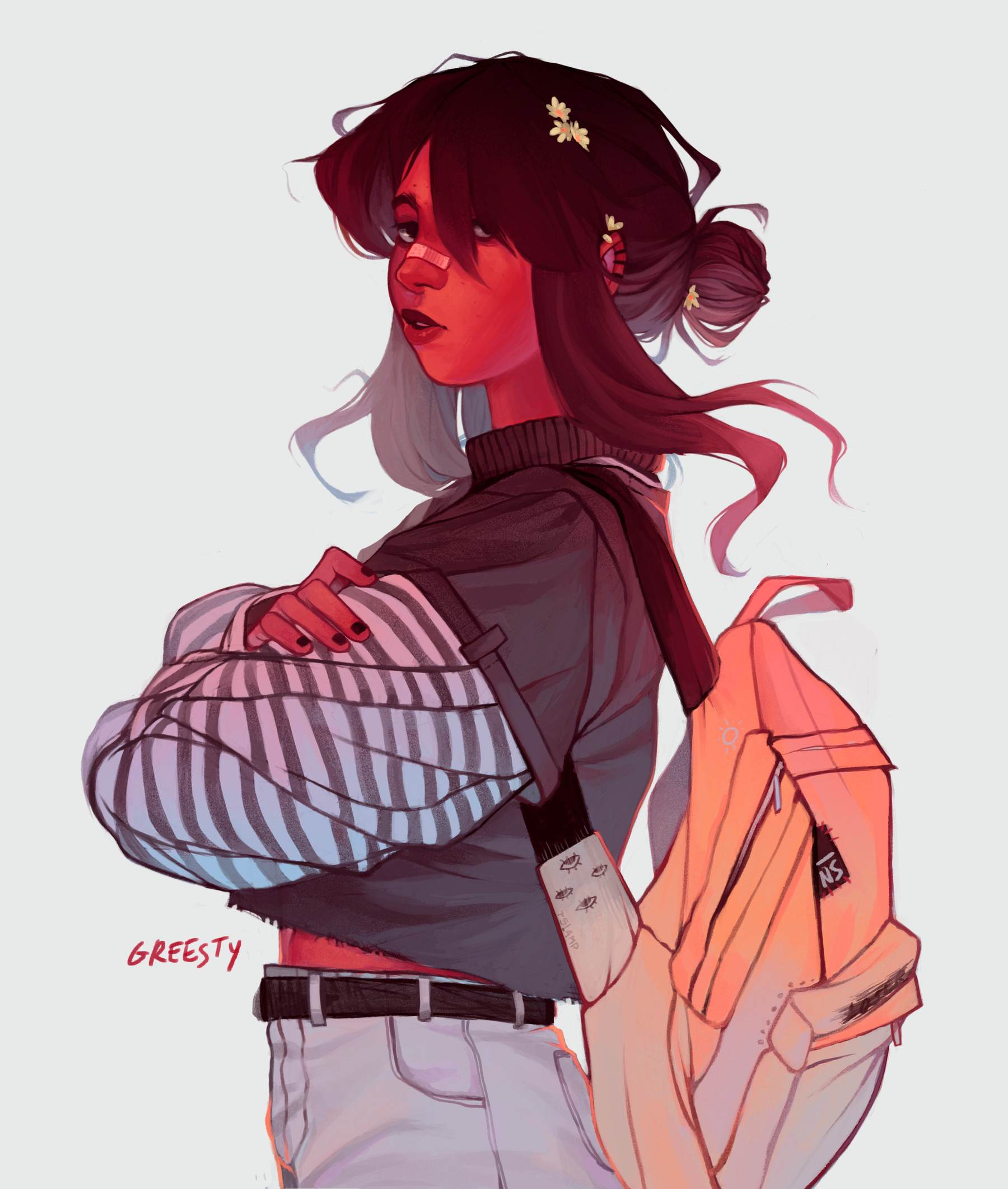Here’s what you can find in the Gear Compendium
Introduction
The Compendium of Assets is intended to be a quick reference tool for all of the bits of gear or types of property that a character might own, use, or encounter within the various stories told using Spectrum. The Compendium is intended to be an exhaustive list of all the possible bits of gear, property, or physical resources.
And while providing a truly comprehensive list of all the possible properties, equipment, tools, supplies, weapons, etc… is an impossible task, the compendium will be in a near constant state of improvement in order to supply players with the majority of the rules that they might find themselves wanting, needing, or encountering during their explorations in the worlds of Spectrum.
The Purpose of Generalization
Within the Gear Compendium, you’ll notice that we use generalized or a generic catchall for certain types of items. For example, we do not delineate between a Spatha, a Short Sword, or a Hand Axe. Instead, these are all represented under the One-Handed Sharp category. The reason for this is while the exact method of their use and fighting styles will differ slightly based on the blade length, shape, and hilt configuration, functionally they will all work the same. They rely on most of the same body mechanics, and they will cause similar amounts of damage within the hands of a skilled wielder.
Furthermore, items will vary depending on the time period they were constructed. The first flashlight, for example, was invented in 1899 and is a far cry from the lightweight, compact LED flashlights we use today but the overall function is the same. Now, if your story takes place in a time when flashlights have been created, you can simply opt to grab a flashlight without having to sift through a list and determine which one is thematically appropriate.
By generalizing, we can remove countless lists of items with arbitrary differences in an effort to fill pages and instead, make a simple, easy to reference categories. This allows a great deal of flexibility to both the players and the Narrator while keeping the Gear Compendium a concise reference guide. Players and Narrators should work together to determine what is appropriate for your game, especially if the player is looking for something specific.
Terms Used to Describe Gear
- Mass: Mass represents the overall physical dimensions of an item and how it relates to a character’s ability to carry it without being over-encumbered.
- Capacity: Some items have a limited number of uses before the item needs to be replaced, replenished, or recharged. These items include consumable items such as a quiver of arrows or the duration of a flashlight battery.
- Suggested Skill: Describes the skill that is most commonly associated with the use of that item. There may be situations where using an item with an uncommon skill is appropriate or even superior. Suggested skill(s) are merely that, a suggestion. Alternative uses are subject only to your imagination (and the Narrator’s discretion.)
- Description: Explains the item’s overall function and common purpose.
- Special Rules: Special rules regarding the use of the item or the effect of its use are denoted here, such as bonuses or penalties applied to a character’s skill check when using the item.
A World of Impermanence
In truth, we live in a reality where things break. Blades become dull; tools become worn; clothing becomes threadbare and tattered. We initially created a system where items would become damaged with use, requiring maintenance, repair, or, in the worst case, replacement. Countless hours were spent working the math and making a system that would represent the degradation of gear in a way that was mechanically balanced and logically sound.
It accomplished those goals quite beautifully. And in turn, it made the game less fun. Simply put, it is unreasonable to incorporate those mechanics in a way that doesn’t bog down gameplay and add a tedious amount of bookkeeping.
With that in mind, Narrators, it is incumbent on you to create a world of consequence, as that is one of the many elements that makes a story worth telling. Because in truth, things do break and almost always at the most inopportune time. Creating a world of impermanence is essential to adding layers of dramatic tension to a world and to a story that simply can’t be done through other methods.
Procurement and Cost
Depending on the paradigm of your story, certain gear may not be available. Much in the same way that certain skills won’t apply to every narrative, i.e., computers in a Tolkien-based Fantasy setting, certain items in the gear compendium will not apply to every narrative.
With that said, it is understood that most of a character’s initial Gear will be purchased, inherited, or otherwise procured during character creation based on a character’s starting assets unless the Narrator deems otherwise. New gear can be acquired organically throughout the story.
The costs associated with items are represented in USD and are equivalent to the median market price in the current real world (as of this writing) and can be adjusted as necessary. In many instances, there is a wide range of prices on an item, some higher and some lower. Players and Narrators alike are encouraged to play with that information. In instances where the quality of an item truly makes a difference in its function or overall purpose, they are broken into tiers to represent both function and cost.
The Coin of the Realm
Given the, quite literally, limitless settings and themes that your story can take place, this system does not attempt to quantify or qualify potential currencies and subsequent conversions.
Therefore, the total valuation of a character’s assets are represented in USD. How that translates to the economics of your story setting is up to the Narrator and the participants.
Why? Perhaps your story takes place in a post-apocalyptic wasteland where bottle caps and can tabs are the used currency. Maybe you’re playing a historical fiction recreation of the French Revolution and are using the assignat. Might be that your story takes place in Alliance space and Galactic Credits are the only one of seven recognized currencies.
Melee Weapons
A melee weapon is any form of hand-held weapon designed for use in hand-to-hand combat where the weapon itself makes direct physical contact with the target. Melee weapons come in multiple sizes, from small and easily concealed to large two-handed weapons that are taller than the wielder themselves. Melee weapons predominately deal one of two types of damage, either sharp or blunt.
Flexible Weapons
Cost: $200
Mass: 2
Capacity: N/A
Suggested skill: Flexible Weapons
Description: Flexible weapons are unique in their combat style, focusing on control and precision over brute force. These weapons are characterized by their long, supple form, allowing for a wide range of motion and the ability to bind, snare, or disarm opponents. While they typically deal less damage compared to rigid weapons and offer limited defensive capabilities, in the hands of a skilled user, their ability to control the battlefield and incapacitate foes from a distance makes them tactically valuable.
Special rules: Damage rating is equal to character’s agility with ◄ 1.
One-Handed Blunt
Cost: $50
Mass: 1
Capacity: N/A
Suggested skill: Melee One-Handed
Description: One-handed blunt weapons are designed for close-quarters combat, delivering powerful, concentrated impact. Typically, compact and robust, they often feature a heavy head on a short handle, such as in maces, clubs, or a table leg.
Special rules: Damage rating is equal to characters strength with ◄ 2.
One-Handed Sharp
Cost: $100
Mass: 1
Capacity: N/A
Suggested skill: Melee One-Handed
Description: One-handed sharp weapons are typically designed for swift, versatile combat, allowing for a balance of offense and defense. The shorter length makes them suitable for use with a shield or in dual-wielding styles.
Special rules: Damage rating is equal to characters strength with ◄ 1.
Polearm Blunt
Cost: $750
Mass: 3
Capacity: N/A
Suggested skill: Melee Two-Handed
Description: Blunt polearms, such as the war hammer, are characterized by a long shaft with a heavy, blunt end, often made of wood, metal, or reinforced with metal. These weapons leverage their length for reach and momentum, allowing for powerful strikes that can incapacitate or break through armor.
Special rules: Damage rating is equal to character strength and increases the range of the weapon by 1.
Polearm Sharp
Cost: $1,200
Mass: 3
Capacity: N/A
Suggested skill: Melee Two-Handed
Description: Edged polearms, such as halberds, glaives, and naginatas, combine elements of spears and axes or swords, offering both reach and cutting ability. They typically feature a long shaft topped with a blade that can be variously designed for slashing, chopping, or thrusting. These weapons extended reach allows users to engage at a distance.
Special rules: Damage rating is equal to character strength 1 ► and increases the range of the weapon by 1.
Precision Weapons
Cost: $600
Mass: 2
Capacity: N/A
Suggested skill: Precision Weapons
Description: Precision Weapons are designed for precision and agility, emphasizing skill and dexterity over brute strength. These weapons typically have slender, lightweight blades that allow for quick, accurate strikes and complex maneuvers, making them ideal for skilled fighters who rely on speed and technique over raw strength.
Special rules: Damage rating is equal to characters finesse with ◄ 1.
Small Blunt
Cost: $25
Mass: 0
Capacity: N/A
Suggested skill: Melee One-Handed
Description: Small blunt weapons are primarily designed for subtlety and close-quarters effectiveness. These weapons are compact and easily concealed, making them ideal for discreet carry. They consist of a weighted head, often made of lead or similar heavy materials, attached to a short handle.
Special rules: Damage rating is equal to characters strength with ◄ 3.
Small Sharp
Cost: $50
Mass: 0
Capacity: N/A
Suggested skill: Melee One-Handed
Description: Small sharp weapons, including daggers and throwing knives, excel in versatility, stealth, and close-quarters combat. Compact and lightweight, they are ideal for concealment and rapid deployment in extremely close encounters.
Special rules: Damage rating is equal to characters strength with ◄ 2.
Two-Handed Blunt
Cost: $170
Mass: 2
Capacity: N/A
Suggested skill: Melee Two-Handed
Description: Two-handed blunt weapons are designed for delivering powerful, crushing blows. They typically feature a large, heavy head mounted on a long shaft, requiring both hands for effective control and maximum force. These weapons excel in breaking through armor and defenses, leveraging their weight and momentum for devastating impact.
Special rules: Damage rating is equal to characters strength with ◄ 1.
Two-Handed Sharp
Cost: $680
Mass: 2
Capacity: N/A
Suggested skill: Melee Two-Handed
Description: Two-handed sharp weapons typically feature a broad blade that requires both hands to wield effectively. This design enables powerful, sweeping strikes and greater control against multiple opponents or in open combat, but it also demands more space to maneuver and limits the use of shields or secondary weapons.
Special rules: Damage rating is equal to character’s strength.
Ranged Weapons
A ranged weapon is any form of weapon designed to launch a projectile at the target at high velocity. Ranged weapons come in various sizes and have various processes required for reloading and preparing the next shot. Ranged weapons predominately deal blunt and sharp damage, with some ranged weapons dealing with ballistic damage. See Combat in the Core Rule Book for damage definitions.
Range Definitions
All ranged weapons have range increments where they are more (or less) effective. These ranges will vary based on the type of weapon, the type of ammunition being used, and various other conditions as determined by the Narrator. Spectrum uses the following terms and definitions to define range.
- Close: Often mistakenly called “point blank,” this range describes using a ranged weapon so close to the target that they are considered nearly impossible to miss. In most cases, this is considered 5 meters or less.
- Short: The minimum distance before reaching “point blank.” At this range, hitting a target is easier, but so is closing the distance. A “don’t shoot till you see the whites of their eyes” distance.
- Medium: The maximum distance at which the weapon is capable of making non-arcing shots at a target.
- Long: The maximum distance at which, without special equipment and training, the weapon and ammunition are capable of making consistent hits.
- Extreme: The distance at which, with specialized equipment and training, the weapon and ammunition is still capable of making consistent hits. Uses the Targeting Skill.
- Maximum: The distance at which, with specialized equipment and training, the weapon and ammunition are still capable of effectively damaging a target. Uses the Targeting Skill.
Bow
Cost: $800
Mass: 1
Capacity: 1 arrow
Suggested skill: Bow
Description: Bows are ranged weapons consisting of a flexible stave that bends to store energy, and a string that releases this energy to propel arrows. They come in various sizes and designs, from the short, compact bows used for mobility and close-range shooting, to the longbows known for their extended range and power. Bows require the user to be strong enough to draw the bow.
Special rules: A bow’s rating determines the minimum strength required to use the weapon. The damage inflicted using a bow and arrow is determined by the bow’s rating modified by the type of arrow used.
Field Point Arrow
Cost: $15 per
Mass: 0
Capacity: N/A
Suggested skill: Bow
Description: Field points have a sharp point and curved outer edges. These curved edges severely reduce the penetration in hard targets such as wood. Therefore, these points are very useful for archers that shoot in the woods.
Field Point Arrow Table
| BOW RATING | DAMAGE | CLOSE | SHORT | MEDIUM | LONG | EXTREME | MAXIMUM |
| 5 | 3 | 1-3 | 4-10 | 11-20 | 21-30 | 31-45 | 80 |
| 7 | 5 | 1-4 | 4-15 | 16-30 | 31-45 | 46-70 | 120 |
| 10 | 7 | 1-5 | 6-20 | 21-40 | 41-60 | 61-90 | 160 |
| 13 | 10 | 1-6 | 7-26 | 27-52 | 53-80 | 81-120 | 210 |
| 15 | 10 | 1-6 | 7-30 | 31-60 | 61-90 | 91-135 | 240 |
| 17 | 13 | 1-7 | 8-35 | 36-70 | 71-105 | 106-160 | 280 |
| 19 | 13 | 1-7 | 8-40 | 19-80 | 81-120 | 121-180 | 320 |
| 22 | 17 | 1-8 | 9-45 | 46-90 | 61-120 | 121-200 | 360 |
Broadhead Arrow
Cost: $25 per
Mass: 0
Capacity: N/A
Suggested skill: Bow
Description: Broadheads sacrifice aerodynamics for increased penetration and cutting power.
Sling
Cost: $50
Mass: 0
Capacity: One stone or “bullet”
Suggested skill: Thrown
Description: The sling is a ranged weapon typically used for throwing stones or lead bullets. It consists of a small pouch attached to two lengths of cord. The user places the projectile in the pouch, whirls the sling to build momentum, and then releases one end of the cord to launch the projectile. Slings are capable of propelling projectiles over long distances with surprising force and accuracy.
Special rules: Damage rating is equal to the character’s strength with ◄ 1 of blunt damage. Range is determined by the ammunition used.
Broadhead Arrow Table
| BOW RATING | DAMAGE | CLOSE | SHORT | MEDIUM | LONG | EXTREME | MAXIMUM |
| 5 | 5 | 1-3 | 4-10 | 11-20 | 21-30 | 31-45 | 80 |
| 7 | 7 | 1-4 | 4-15 | 16-30 | 31-45 | 46-70 | 120 |
| 10 | 10 | 1-5 | 6-20 | 21-40 | 41-60 | 61-90 | 160 |
| 13 | 13 | 1-6 | 7-26 | 27-52 | 53-80 | 81-120 | 210 |
| 15 | 15 | 1-6 | 7-30 | 31-60 | 61-90 | 91-135 | 240 |
| 17 | 17 | 1-7 | 8-35 | 36-70 | 71-105 | 106-160 | 280 |
| 19 | 20 | 1-7 | 8-40 | 19-80 | 81-120 | 121-180 | 320 |
| 22 | 22 | 1-8 | 9-45 | 46-90 | 61-120 | 121-200 | 360 |
Sling Stone
Cost: $50
Mass: 0
Capacity: N/A
Suggested skill: Thrown
Description: A found stone of appropriate size and shape to be deployed from a sling.
Thrown Weapons
Cost: Varies
Mass: Varies
Capacity: 1
Suggested skill: Thrown
Description: A projectile thrown by the user at a target. Most throwing weapons are designed specifically with aerodynamics and accuracy in mind, such as a shuriken or dart. In truth, any weapon or object close at hand can be used as a thrown weapon should the need arise.
Special rules: A thrown weapon deals damage equal to ◄ 1 of the weapon’s base damage rating. If the weapon is not designed to be thrown, such as a sword, the user suffers a ◄ 1 to the attack roll and ◄ 2 to the weapon’s base damage rating.
Sling Stone Table
| STRENGTH | DAMAGE | CLOSE | SHORT | MEDIUM | LONG | EXTREME | MAXIMUM |
| STR 5 | 3 | 2-3 | 4-7 | 8-14 | 15-28 | 29-60 | 110 |
| STR 7 | 5 | 2-4 | 5-9 | 10-19 | 20-38 | 39-85 | 150 |
| STR 10 | 7 | 2-5 | 6-11 | 12-23 | 24-55 | 56-110 | 220 |
| STR 13 | 10 | 2-8 | 9-17 | 18-35 | 36-70 | 71-140 | 280 |
| STR 15 | 10 | 2-8 | 9-20 | 21-40 | 41-80 | 81-160 | 330 |
| STR 17 | 13 | 2-10 | 11-22 | 23-45 | 46-90 | 91-180 | 360 |
| STR 19 | 13 | 2-10 | 11-25 | 26-50 | 51-105 | 106-210 | 420 |
| STR 22 | 17 | 2-10 | 11-30 | 11-60 | 61-120 | 121-240 | 480 |
Shields
Shields serve as a physical barrier between the wielder and an incoming blow or missile. Shields can be made of metal, wood, leather, or any other suitable stiff material. In most cases, the use of a shield would preclude the user from using a weapon in that hand. However, with the right combat techniques, the shield itself can be used as a melee weapon.
Buckler
Cost: $150
Mass: 1
Capacity: N/A
Suggested skill: Shield
Description: A very small shield, ~15-35 cm in diameter, gripped in the fist with a central handle behind the boss. Its size makes for poor protection against missile weapons but useful in deflecting the blow of an opponent’s weapons, binding arms, hindering movements, or punching.
Special rules: Block rating is equal to character’s Finesse with ◄ 1.
Large Shield
Cost: $400
Mass: 3
Capacity: N/A
Suggested skill: Shield
Description: Often called tower or wall shields. Usually ~60-70 cm wide and between 90-125 cm tall. The size of this shield makes it the gold standard for hiding behind to mitigate ranged melee attacks. Its size makes for good protection against missile weapons and its greater mass makes it very good at absorbing melee attacks.
Special rules: Block rating is equal to character’s Toughness with 2 ►.
Medium Shield
Cost: $250
Mass: 2
Capacity: N/A
Suggested skill: Shield
Description: A standard sized shield, ~60-90 cm in diameter, usually with a forearm strap and handle for stability when blocking. Its size makes for good protection against missile weapons and its greater mass makes it very good at absorbing melee attacks.
Special rules: Block rating is equal to character’s Toughness with 1 ►.
Small Shield
Cost: $150
Mass: 1
Capacity: N/A
Suggested skill: Shield
Description: A small shield, ~35-60 cm in diameter, usually with a forearm strap and handle for stability when blocking. Its size makes for some protection against missile weapons and its light weight makes it good at both deflecting and absorbing melee attacks.
Special rules: Block rating is equal to character’s Toughness.
Armor
Armor is a suit of protective outer layers designed to reduce the force of an incoming blow or projectile and protect the wearer’s body. Armor can be constructed from various materials such as overlapping lateral scales, plates of metal, interwoven metal links, or even scraps of rubber tires.
Chain Armor
Cost: $1,500
Mass: 5
Capacity: N/A
Suggested skill: N/A
Description: Chain armor is a type of armor consisting of small metal rings linked together in a pattern to form a mesh, which provides flexible protection against slashing attacks and is typically lighter than plate armor.
Special rules: Armor Rating of 10 and is 1 ► vs sharp weapons.
Cloth Armor
Cost: $200
Mass: 2
Capacity: N/A
Suggested skill: N/A
Description: Cloth armor is a protective garment made from quilted layers of fabric. It provides cushioning and defense against blunt force and slashing attacks and can be worn alone or beneath other types of armor for added protection.
Special rules: Armor Rating of 5.
Leather Armor
Cost: $300
Mass: 3
Capacity: N/A
Suggested skill: N/A
Description: Leather armor, made from tanned and processed hides and skins, which are then boiled to provide a stiffened layer, offers a degree of protection against slashing and blunt damage. While not the most protective, the ready availability of materials and relatively inexpensive cost make it a solid choice for a tight budget.
Special rules: Armor Rating of 7.
Plate Armor
Cost: $2,500
Mass: 6
Capacity: N/A
Suggested skill: N/A
Description: Plate armor is a type of personal armor made from plates designed to protect the body in combat, offering excellent defense against bladed weapons, arrows, and blunt force while maintaining flexibility and mobility.
Special rules: Armor Rating of 13.
Scale Armor
Cost: $1,000
Mass: 4
Capacity: N/A
Suggested skill: N/A
Description: Scale armor is made of small, overlapping plates (scales) sewn or laced onto a backing material like cloth or leather, providing a flexible yet protective covering that excels at deflecting slashing attacks and is lighter and more adaptable than full plate armor.
Apparel
Clothing to protect the body from the elements, both environmental and social.
Cloak
Cost: $300
Mass: 1
Capacity: N/A
Suggested skill: N/A
Description: A long, loose outer garment typically worn over other clothing for warmth or protection.
Clothing (Basic)
Cost: $200
Mass: 1
Capacity: N/A
Suggested skill: N/A
Description: Your normal, average, everyday wear.
Clothing (Fine)
Cost: $1,000
Mass: 1
Capacity: N/A
Suggested skill: N/A
Description: High-quality garments made from premium materials designed for formal occasions and appearances.
Clothing (Designer)
Cost: $1,750
Mass: 1
Capacity: N/A
Suggested skill: N/A
Description: Top of the line and tailored to fit. These threads will have people talking.
Clothing (Travel)
Cost: $2,000
Mass: 1
Capacity: N/A
Suggested skill: N/A
Description: Sturdy clothing designed for comfort and durability, suitable for long journeys or varying climates.
Footwear (Basic)
Cost: $75
Mass: 1
Capacity: N/A
Suggested skill: N/A
Description: Basic shoes suitable for everyday activities and comfortable wear.
Footwear (Fine)
Cost: $300
Mass: 1
Capacity: N/A
Suggested skill: N/A
Description: High-quality shoes made from superior materials, designed for formal occasions and polished appearances.
Footwear (Travel)
Cost: $200
Mass: 1
Capacity: N/A
Suggested skill: N/A
Description: Durable boots or shoes designed for long treks over various terrains.
Special Rules: Adds +1 to all Reflex rolls when navigating difficult terrain.
Climbing
Climbing gear is designed to help a character scale a vertical surface while minimizing the risk of falling and potential death. Some pieces of climbing gear make ascending easier, while others are designed to work in tandem with other climbing gear to protect a climber from an untimely death.
Belay Device
Cost: $70
Mass: 0
Capacity: N/A
Suggested skill: Climbing
Description: A mechanical friction-brake device used to control the climbing rope(s) when belaying a climber with the rope appropriately attached to them, allowing the rope to be locked-off/fully-braked with minimal effort when arresting a climber’s fall. Capable of safely holding 150kg.
Special rules: Allows a character to perform a belaying or rappelling action.
Climbing Harness
Cost: $80
Mass: 1
Capacity: N/A
Suggested skill: Climbing
Description: Worn over one’s pelvis, which allows a person to safely use a climbing or tether rope.
Special rules: Allows for the use of belay devices.
Climbing Shoes
Cost: $85
Mass: 1
Capacity: N/A
Suggested skill: Climbing
Description: These extremely specialized shoes have an aggressively tight fit, little if any padding, and a smooth, firm, sticky rubber sole. Uncomfortable and unsuited for walking and hiking, they are usually donned immediately before use.
Special rules: Mitigates penalties associated with certain climbing conditions by 1 ►.
Grapnel
Cost: $300
Mass: 1
Capacity: N/A
Suggested skill: Climbing
Description: A device that typically has multiple hooks attached to a rope or cable. It is thrown, dropped, projected, or fastened directly by hand to where at least one hook may catch and hold on to an object.
Special rules: Throwing to a specific location requires an Instant Throw test with a target number of Goal Points relative to the distance from the thrower, as well as the area of the surface the character is attempting to target.
Rope, Climbing
Cost: $3 per meter
Mass: 2
Capacity: N/A
Suggested skill: Climbing
Description: Synthetic fiber rope with high tensile strength designed to stretch under load to prevent damage to the user, should they fall.
Special rules: Required for use with Climbing Devices.
Rope Ladder (Aid Ladder)
Cost: $85
Mass: 3
Capacity: N/A
Suggested skill: Climbing
Description: Basic rigging ladder that extends 3 meters. Once the ladder has been anchored, it allows a non-climber to ascend vertical surfaces.
Special rules: Also available in a 6-meter length which costs $200 and adds +1 mass.
Pitons
Cost: $20 each
Mass: 0
Capacity: Single
Suggested skill: Climbing
Description: A steel spike that is driven into a crack or seam in the climbing surface using a hammer, which acts as an anchor point for the climber to anchor their safety equipment.
Craft / Repair
Crafting and Repair requires specific tools and materials relevant to the particular item being fabricated or repaired. These material and tools are divided into kits and supplies. Additionally, a character may have access to a workshop or workspace that caters to a particular craft, providing a character with access to specialized tools they might not otherwise have access to.
The particular type of Kits, Supplies, and Workshop space must be specified when purchasing and are subject to the Narrator’s discretion. Some examples of kits include tailor, woodworking, leatherworking, stone carving, lapidary, blacksmithing, armor smithing, and cooking. Of course, these are far from exhaustive. The players and the narrator are encouraged to work together and determine what is appropriate for each particular story as some kits may have some level of overlap.
Kits
Craft / Repair tools and equipment is organized as a “kit,” designed for specific purposes. Kits are meant to contain the components generally required or expected for the kit’s purpose. Instead of making a hyper specific list of a kit’s contents, a kit is generally assumed to contain the average tools necessary in order to work with a certain medium. For example, a painter’s kit would likely contain brushes, pallets, an easel, and various other tools to apply paint to a surface.
In most instances, a kit is a portable set of tools that the character can transport with relative ease. It is worth noting that not all crafts require the same number of tools. A leatherworking kit, for example, would take up a relatively small amount of space vs. the tools necessary to rebuild a car’s engine.
If It’s Important to You, Buy it Separate
A tool kit, regardless of its overall capacity, is considered to have a set of generalized tools required to work in its related media. This means that a character may or may not have access to a hyper-specific item, per the Narrator’s discretion.
Therefore, if a specific tool is important to your character, such as grandpa’s lucky screwdriver or a pair of pneumatic, laser-guided pinking shears, it’s worth noting it separately.
Supplies
While kits represent the tools necessary to create or repair an object, a supply kit represents all of the fungible materials necessary for the item’s creation. Looking back at the painter’s kit which contains all of the brushes and necessary equipment to create a painting, the painter’s supply kit would contain the necessary paints, gesso, thinners, lacquers, and canvas, essentially all of the consumable materials that are required to create a painting.
Total number of uses is reflected in the kits capacity, which reflects the total number of goal points that the use of the kit can generate before it needs to be replenished. For example, if a supply kit has a total of 30 goal points worth of capacity, that means that the supply kit can be used to generate a total of 30 goal points, whether in one painting or multiple before it needs to be replaced or restocked.
What’s this Going to Cost Me?
When it comes to Kits, Supplies, and Workshops, the cost is simply what it costs as the tools and materials required for different crafts varies greatly. A tailor can get by with some pins, needles, thread, and scissors but a molecular chemist is going to need an entirely different set of materials and working conditions.
We’ve provided a price range with the low end representing simple crafts and the high end representing decidedly more complex and infrastructure intensive. It is up to the Narrator to decide how much these resources will cost in game.
Workshops
A workshop is the ultimate space and environment for crafting and repairing items. A fully kitted workshop is considered to have all the tools and equipment necessary to make or fix items within the related media. For example, an automotive workshop would have toolboxes of all the various hand tools, power tools, hoists, lifts, diagnostic equipment, and anything else required for automotive work.
Some crafts simply require the use of a workshop as they are completely unsuitable to perform anywhere else. A biochemist, for example, would need a laboratory with the appropriate equipment in order to truly utilize their craft without added complications. With that being said, in most cases, a workshop is not a portable space but instead is a permanent establishment that a character either rents or owns. The cost of the workshop is directly related to the tools and equipment within, not the actual space itself. The character may also need to pay a monthly rent to maintain their workshop if they do not own the building or space the workshop is located.
Please note, while it is considered to have all the related equipment, the raw materials required to perform a craft or repair may or may not be included, per the Narrator’s discretion.
Craft Kit (Rudimentary)
Cost: $10-100
Mass: 1
Capacity: N/A
Suggested skill: Craft*
Description: A barebones kit containing the most essential tools necessary to craft or repair items of the specified type.
Special Rules: User suffers ◄ 3 to every Craft / Repair Roll while using this kit.
Craft Kit (Basic)
Cost: $100-1,000
Mass: 2
Capacity: N/A
Suggested skill: Craft*
Description: A basic kit containing the tools necessary to craft or repair items of the specified type.
Special Rules: User suffers ◄ 2 to every Craft / Repair Roll while using this kit.
Craft Kit (Advanced)
Cost: $1,000
Mass: 3
Capacity: N/A
Suggested skill: Craft*
Description: A well-stocked kit containing high quality tools necessary to craft or repair items of the specified type.
Special Rules: User suffers ◄ 1 to every Craft / Repair Roll while using this kit.
Repair Kit (Rudimentary)
Cost: $10-100
Mass: 0
Capacity: N/A
Suggested skill: Repair
Description: A barebones kit containing the most essential tools necessary to repair items of the specified type.
Special Rules: A character suffers ◄ 2 to repair rolls when performing a Triage or Temporize checks in conjunction with the appropriate associated skill.
Repair Kit (Basic)
Cost: $100-1,000
Mass: 1
Capacity: N/A
Suggested skill: Repair
Description: A basic kit containing the tools necessary to repair items of the specified type.
Special Rules: A character suffers ◄ 1 to repair rolls when performing a Triage, Temporize or Mend checks in conjunction with the appropriate associated skill.
Repair Kit (Advanced)
Cost: $1,000 – 10,000
Mass: 2
Capacity: N/A
Suggested skill: Repair
Description: A well-stocked kit containing high quality tools necessary to craft or repair items of the specified type.
Special Rules: Allows a character to perform Triage, Temporize or Mend checks in conjunction with the appropriate associated skill.
C/R Supplies
Cost: $10-250/pt
Mass: Varies
Capacity: Varies
Suggested skill: N/A
Description: A collection of fungible materials used to craft items of the specified type.
Special Rules: The cost for craft supplies is variable and determined by the narrator given the context of the paradigm of the story.
Workshop
Cost: $1,000-$100,000
Mass: N/A
Capacity: N/A
Suggested skill: Craft or Repair
Description: A workshop space complete with all of the tools, equipment and infrastructure required for specific craft/repair use.
Special Rules: The user does not suffer any penalty shifts to Craft / Repair Rolls when using the appropriate workshop.
Food
Food and drink to keep the body going.
Emergency Rations
Cost: $10
Mass: 1
Capacity: 1,250
Suggested skill: N/A
Description: Contains enough calories to sustain the body for a day. Tastes like survival.
Meal (Standard)
Cost: $25
Mass: N/A
Capacity: 800 calories
Suggested skill: N/A
Description: A standard dining experience, what you might expect at a middling chain restaurant.
Meal (Fine Dining)
Cost: $100-200
Mass: N/A
Capacity: 800 calories
Suggested skill: N/A
Description: An upscale dining experience.
MRE
Cost: $20
Mass: 3
Capacity: 1,250 calories
Suggested skill: N/A
Description: “Meal Ready to Eat” viable for years of storage. It comes with a day’s worth of nutrition.
Beer, Pint
Cost: $5-12
Mass: 1
Capacity: 1 dose ethanol, 150 calories
Suggested skill: N/A
Description: A standard serving of beer made from malted barley and hops.
Spirits, 750 mL Bottle
Cost: $50-100
Mass: 2
Capacity: 18 doses ethanol, 100 calories
Suggested skill: N/A
Description: A bottle of distilled alcoholic beverage, such as whiskey, vodka, or rum.
Trail Rations
Cost: $25
Mass: 1
Capacity: 600 calories
Suggested skill: N/A
Description: Durable food items designed for long-lasting energy, typically including dried meats, nuts, and hardtack.
Wine, 750 mL Bottle
Cost: $15-1000
Mass: 2
Capacity: 5 doses ethanol, 125 calories
Suggested skill: N/A
Description: A standard bottle containing wine, typically made from fermented grapes and varying widely in taste, strength, and quality.
Light
Various light sources that provide illumination.
Candle
Cost: $1/each
Mass: 0
Capacity: 1 hour
Suggested skill: N/A
Description: A candle made of tallow or wax.
Special Rules: Casts light for 2 meters radius.
Chem Light
Cost: $10/each
Mass: 0
Capacity: 12 hours
Suggested skill: N/A
Description: A plastic vial filled with photoreactive chemicals that glows when activated.
Special Rules: Casts light for 2 meters radius.
Flashlight
Cost: $30
Mass: 0
Capacity: High Power-2 hours, Medium Power-5 hours, Low power-200 hours
Suggested skill: N/A
Description: Handheld battery-powered light source.
Special Rules: Casts light in a 60° cone: High Power-100 meters, medium power-50 meters, Low power -1 meter.
Lantern
Cost: $15-150
Mass: 1
Capacity: High 10 hours / low 50 hours
Suggested skill: N/A
Description: A handheld lantern that casts light in 360 degrees.
Special Rules: Casts light for 15 meters. Can be equipped with a hood to focus the light in a 60-degree arc.
Torch
Cost: $12
Mass: 1
Capacity: 1 hour
Suggested skill: N/A
Description: A stick with a combustible material at the end, such as pitch or an oil-soaked rag that is lit to produce light.
Special Rules: Casts light for a 10-meter radius.
Medicine
Various life-saving medical supplies and implements used to stop the dying from becoming dead.
Medical Kit (Rudimentary)
Cost: $200
Mass: 1
Capacity: N/A
Suggested skill: Medicine
Description: A bag containing medical implements and equipment required for them to perform a diagnosis and treatment of a sick or wounded character.
Special Rules: A character suffers ◄ 1 to medicine skill rolls when performing triage, diagnosis, stabilize, treatment or resuscitate skill checks. Diagnostic rolls do not consume kit supplies.
Medical Kit (Basic)
Cost: $1,000
Mass: 2
Capacity: N/A
Suggested skill: Medicine
Description: A field bag of medical implements required for them to perform a diagnosis of medical ailments or injuries.
Special Rules: A character suffers ◄ 2 to medicine skill rolls when performing triage, diagnosis, stabilize, or resuscitate skill checks. Diagnostic rolls do not consume kit supplies.
Medical Kit (Advanced)
Cost: $5,000
Mass: 3
Capacity: N/A
Suggested skill: Medicine
Description: A field bag of medical implements required to perform a diagnosis of medical ailments or injuries.
Special Rules: A character suffers ◄ 3 to medicine skill rolls when performing diagnosis or repair skill rolls when performing triage skill checks. Diagnostic rolls do not consume kit supplies.
Trauma Kit (Rudimentary)
Cost: $100
Mass: 0
Capacity: N/A
Suggested skill: Medicine and Repair
Description: Commonly called a “first aid kit”, contains a sparse collection of supplies to provide treatment to wounded characters.
Special Rules: A character suffers ◄ 2 to repair rolls when performing a Triage, Temporize or Mend checks in conjunction with the medicine skill.
Trauma Kit (Basic)
Cost: $500
Mass: 0
Capacity: N/A
Suggested skill: Medicine and Repair
Description: A basic collection of first aid supplies to provide treatment to bleeding and wounded characters.
Special Rules: A character suffers ◄ 1 to repair rolls when performing a Triage, Temporize, Mend, or Stabilize checks in conjunction with the medicine skill.
Trauma Kit (Advanced)
Cost: $2,500
Mass: 0
Capacity: N/A
Suggested skill: Medicine and Repair
Description: A comprehensive collection of first aid supplies to provide treatment to bleeding and wounded characters.
Special Rules: Allows a character to perform Triage, Temporize, Mend, Stabilize, or Resuscitate checks in conjunction with the medicine skill.
Kit Supplies
Cost: $100/pt
Mass: Varies
Capacity: Varies
Suggested skill: N/A
Description: A collection of fungible materials, medical implements and materials required for a functional medical kit.
Special Rules: The cost for first aid supplies is variable and determined by the narrator given the context of the paradigm of the story.
Navigation
The tools necessary to help guide a character through the world using various elements such as landmarks, global positioning coordinates, or the stars.
Compass
Cost: $30
Mass: 0
Capacity: N/A
Suggested skill: Navigation
Description: A device with a magnetized needle that shows the direction of magnetic north.
Cartography Set
Cost: $500
Mass: 2
Capacity: N/A
Suggested skill: Navigation
Description: Includes compasses, sheeting, planimeters, dividers, and writing instruments designed to create analog maps
Special Rules: The character makes an extended Navigation skill test. If they meet or exceed the required number of goal points, they are able to create an accurate map of their present surroundings.
GPS (Handheld)
Cost: $200
Mass: 1
Capacity: N/A
Suggested skill: Navigation or the ability to read an instruction manual
Description: A satellite-based radio navigation system that can accurately pinpoint and guide a user to a geographical location based on input coordinates.
Special Rules: A handheld GPS does not require cellular reception to function and can be used in the most remote corners of the world. Does not work underground or underwater.
Map (Local)
Cost: $10
Mass: 1
Capacity: N/A
Suggested skill: Navigation
Description: A map of a local area based on geographical features, landmarks, or manufactured infrastructure such as roads.
Special Rules: A map is only as good as the maker and may be misleading, out of date, or incomplete.
Map (Regional)
Cost: $200
Mass: 2
Capacity: N/A
Suggested skill: Navigation
Description: A map of a regional area based on geographical features, landmarks, or manufactured infrastructure such as roads.
Special Rules: A map is only as good as the maker and may be misleading, out of date, or incomplete.
Nautical Charts
Cost: $500
Mass: 2
Capacity: N/A
Suggested skill: Navigation
Description: A map of regional waterways marked with depths and known obstacles to help ships safely navigate through various bodies of water.
Special Rules: Add 1 ► when navigating a watercraft.
Nautical Tables
Cost: $300
Mass: 2
Capacity: N/A
Suggested skill: Navigation
Description: A compilation of equations to help a navigator determine coordinates while at sea.
Special Rules: Required for proper use of a sextant.
Sextant
Cost: $100
Mass: 2
Capacity: N/A
Suggested skill: Navigation
Description: Measures the angle between a celestial body and the horizon which can be used to calculate geographical coordinates at sea.
Special Rules: A sextant requires accurate Nautical Tables or Start charts to be used effectively. Attempting to use a sextant without these reference points adds a ◄ 3 to the user’s Navigation roll.
Star Charts
Cost: $200
Mass: 2
Capacity: N/A
Suggested skill: Navigation
Description: A map of the celestial bodies and their position in the sky at various times and seasons.
Special Rules: Required for proper use of a sextant. Can be used as general navigation aid with a ◄ 1, assuming they are accurate.
Security (Physical)
Tools related to breaking-and-entering, skullduggery, and defeating physical security systems such as windows, and locks or to prevent others from doing so.
Lockpicks (Rudimentary)
Cost: $20
Mass: 0
Capacity: N/A
Suggested skill: Security (Physical)
Description: A barebones set of improvised lockpicking tools designed to open various assemblies of tumbler locks. Use of these tools can take minutes to hours.
Special Rules: A character suffers ◄ 2 to Security Rolls to pick locks when using this set.
Lockpicks (Basic)
Cost: $75
Mass: 0
Capacity: N/A
Suggested skill: Security (Physical)
Description: A basic set of lockpicking tools designed to open various assemblies of tumbler locks. Use of these tools can take minutes to hours.
Special Rules: A character suffers ◄ 1 to Security Rolls to pick locks when using this set.
Lockpicks (Advanced)
Cost: $200
Mass: 0
Capacity: N/A
Suggested skill: Security (Physical)
Description: A quality set of lockpicking tools designed to open various assemblies of tumbler locks. Use of these tools can take minutes to hours.
Special Rules: A character suffers no penalty to Security Rolls to pick locks when using this set.
Telescoping Pole
Cost: $50
Mass: 1
Capacity: N/A
Suggested skill: Security (Physical)
Description: A telescoping metal pole that can be used to reach or manipulate objects or traps from a distance.
Special Rules: Extends 3 meters. For every meter away the object is from the character the suffer ◄ 1 to any relevant rolls while using the Telescoping Pole.
Ball Bearing 1”
Cost: $10 per 10
Mass: 1
Capacity: N/A
Suggested skill: N/A
Description: 1” steel spheres intended to create a tripping hazard for unwary characters.
Special Rules: Creates a patch of hazardous terrain when 10+ ball bearings are spread in a 1-meter area. The hazard rating of the hazardous terrain is equal to the number of ball bearings spread in the area.
Caltrops
Cost: $25 per 10
Mass: 1
Capacity: N/A
Suggested skill: N/A
Description: A small area denial weapon made of sharp tines arranged in such a way as to always have one spike pointing up.
Special Rules: Creates a patch of treacherous terrain when 10+ caltrops are spread in a 1-meter area. The hazard rating of the treacherous terrain is equal to the number of caltrops spread in the area.
Foot Hold Trap (Bear)
Cost: $250
Mass: 3
Capacity: N/A
Suggested skill: Survival / Security (Physical)
Description: A device that uses a pressure plate between two metal arms, or “jaws”, lined with spiky protrusions, or “teeth.” Once the plate trigger has been stepped on, the arms snap closed on the foot.
Tripwire
Cost: $10 per meter
Mass: 1
Capacity: N/A
Suggested skill: Survival / Security (Physical)
Description: A cable or cord with myriad uses. Typically, the cord is fastened low to the ground between two immovable objects meant to trip an unwary passerby.
Special Rules: The number of goal points generated on the characters Survival / Security skill roll is the difficulty for an opposing spot check to detect the trap.
Tripwire Alarm
Cost: $130
Mass: 0
Capacity: N/A
Suggested skill: Survival / Security (Physical)
Description: A wire or cord is attached to an alarm device such as a bell that activates when something moves the wire/cord.
Special Rules: Covers a 3 square meter perimeter. Multiple Tripwire Alarms can be strung together to cover a wider area. The number of goal points generated on the characters Security skill roll is the difficulty for an opposing spot check to detect the trap.
Storage
Storage containers of various sizes used to contain, haul, conceal, and otherwise store various items. The capacity of a storage item is calculated prior to calculating the special rules of the storage item.
Bag
Cost: $5
Mass: 0+contained items
Capacity: Holds mass 0-1 items to a max of 5
Suggested skill: N/A
Description: A flexible container used for carrying items, typically made of cloth or leather and can be closed at the top.
Special Rules: Halves the effective mass of carried items.
Backpack (Small)
Cost: $80
Mass: 1+contained items
Capacity: Holds mass 0-2 items to a max of 7
Suggested skill: N/A
Description: It carries stuff.
Special Rules: Halves the effective mass of carried items.
Backpack (Medium)
Cost: $160
Mass: 1+contained items
Capacity: Holds mass 0-2 items to a max of 10
Suggested skill: N/A
Description: It carries more stuff.
Special Rules: Halves the effective mass of carried items.
Chest
Cost: $50
Mass: 2+contained items
Capacity: Holds mass 0-2 items to a max of 20
Suggested skill: N/A
Description: A sturdy box with a lid, used for storing or transporting clothes, tools, and other items.
Special Rules: Halves the effective mass of carried items.
Crate
Cost: $200
Mass: 4 + contained items
Capacity: Holds mass 0-3 items to a max of 50
Suggested skill: N/A
Description: A large shipping container, often made of wood, used to transport or store bulky items.
Special Rules: Halves the effective mass of carried items.
Pouch
Cost: $5
Mass: 0+contained items
Capacity: Holds mass 0 items to a max of 2
Suggested skill: N/A
Description: A small bag or soft container, usually closed with a drawstring, used to hold small items.
Special Rules: Halves the effective mass of carried items.
Lock Box
Cost: $50
Mass: 1+contained items
Capacity: Holds mass 0-1 items to a max of 3
Suggested skill: N/A
Description: A small box designed to keep documents and valuables safe.
Special Rules: Halves the effective mass of carried items.
Security Trunk
Cost: $400
Mass: 3+contained items
Capacity: Holds mass 0-3 items to a max of 25
Suggested skill: N/A
Description: A storage container made of metal. Used to store bulky valuables.
Special Rules: Halves the effective mass of carried items.

